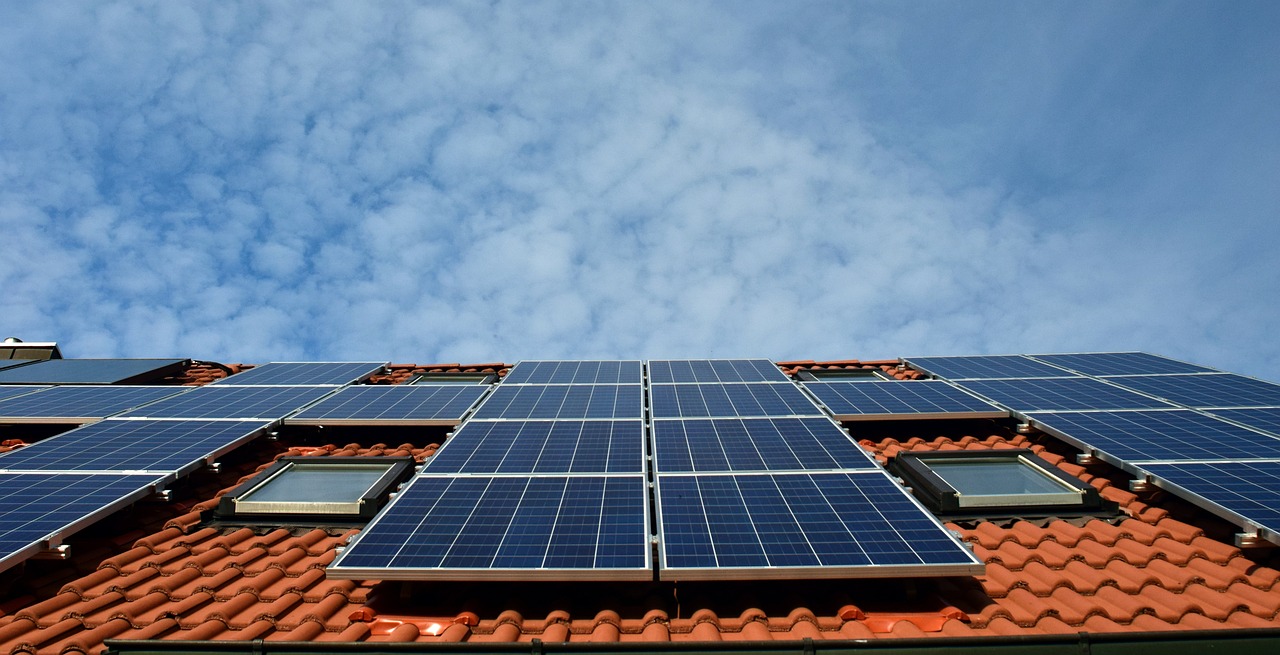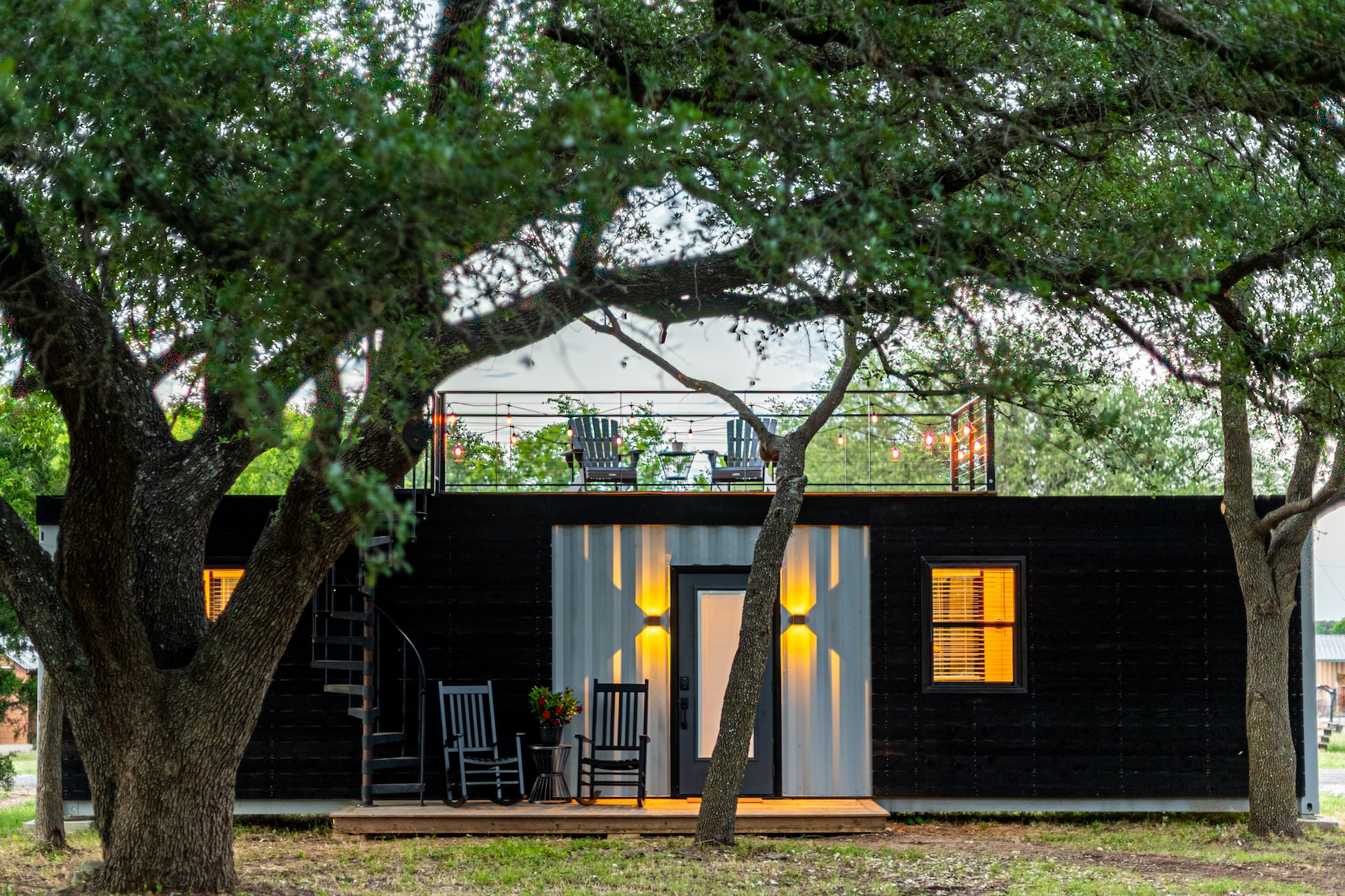
Solar 101
Solar Panels for Tiny Homes: A General Overview
Optivolt
May 20, 2023
7 min read
We’ve all had the dream: you wake up in your tiny home on a cool spring morning, flip on the lights, brew some coffee, turn on some music... all using the power of the sun. If you're taking the next step in turning this dream into a reality, it can be difficult to know where to start. But with a little planning, taking a tiny home off the grid is a very achievable goal.
In this guide, we will provide a general overview of the planning process for adding solar power to a tiny house.
Calculate Energy Needs
The first step of planning a solar power system is determining the amount of energy that you will be consuming. There are two methods of doing this: look at past utility bills (the simpler way) or calculate the energy usage of each appliance/device that you plan to use.
Looking at Past Electric Bills
In 2021, the average electricity consumption in the United States was 886 kWh per month. This data is from all residential homes, so your energy usage may be lower. Most people who live in tiny homes use less electricity due to the smaller space and lower number of family members (the average household size in the U.S. is about 2.6 people).
When looking at your own past energy usage, you should pay attention to your highest month of electricity usage. This will likely correspond with changes in air conditioning needs — regions with mild climates have correspondingly lower energy consumption on average.
Also, take into account any lifestyle changes that you plan to make when moving into a tiny home (if you don't already live in one). Even just getting rid of your television or drying machine will make a drastic impact on your energy consumption, so you may not need quite as much power as you think.
Manual Calculation for Energy Consumption
We can also calculate energy usage manually, based on the wattage rating and expected usage of each appliance in your home.
For example, let's estimate the energy consumption of a 10,000 BTU air conditioning unit. Most AC units of this size are rated at 1000 watts. Let's say that we will be running the unit for 4 hours each day during the hottest months. So, over the course of one 30-day month, we can expect the AC unit to run for 120 hours.
Let's calculate the energy consumption in watt-hours (Wh). Watts multiplied by hours equals the total energy consumption in watt-hours, as follows:
Energy Consumption (Wh) = Wattage Rating × Hours of Use
1000 watts × 120 hours = 120,000 Wh (120 kWh) per month
So, the 10,000 BTU AC unit would consume around 120 kWh in a month where it is used for 4 hours per day.
In order to calculate your total energy usage per month, just perform this calculation for all of the appliances and devices that you plan to power in your tiny home. Then, add up their individual energy consumptions to receive a total.
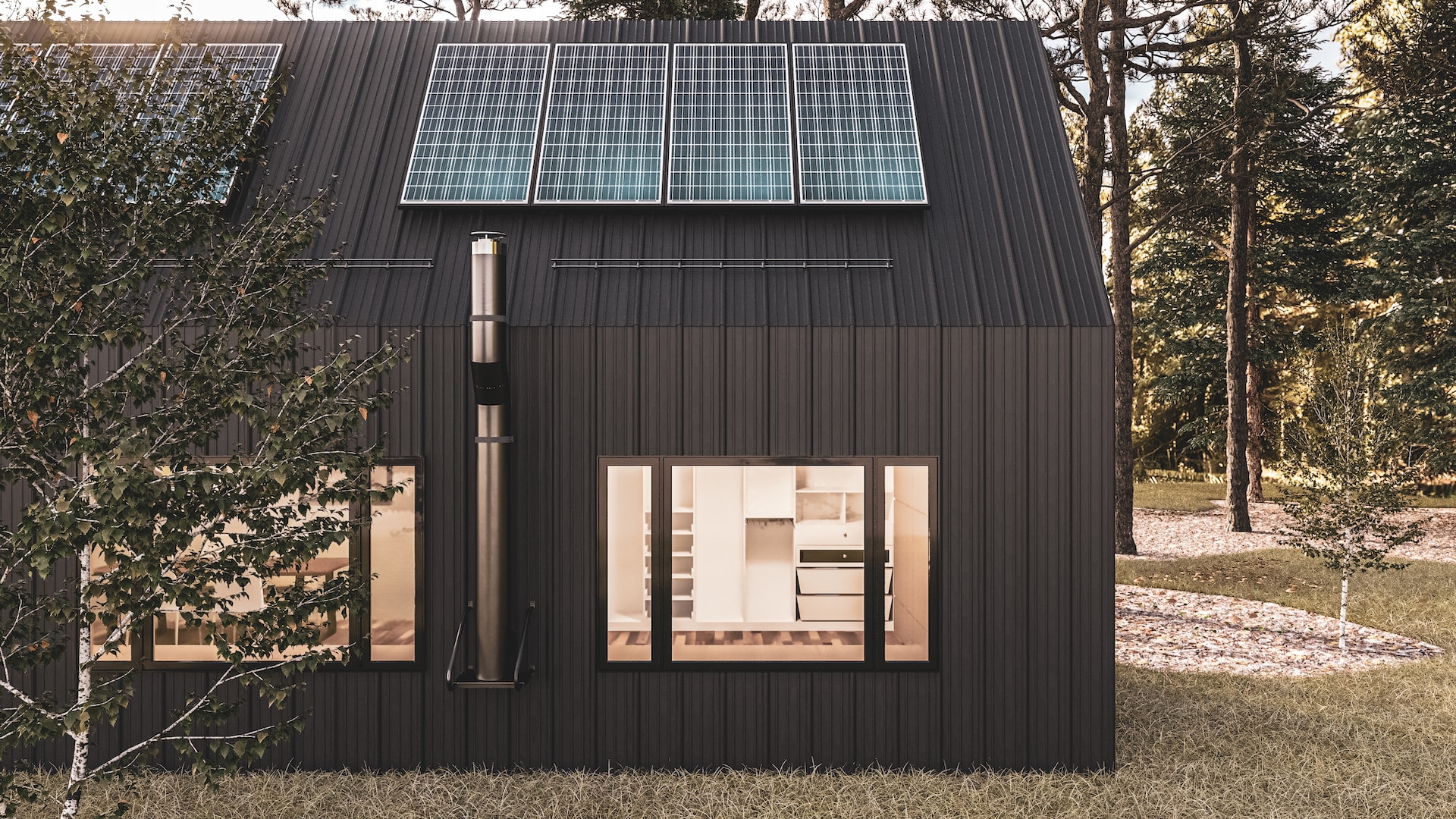
How Many Solar Panels for a Tiny House?
In order to calculate how many solar panels are required for a tiny house, we need to fill in the data points for this calculation:
Number of Solar Panels = Total Solar Wattage / Individual Panel Wattage
And to find our total solar wattage, we will also need this equation:
Total Solar Wattage = Energy Consumption / Sun Hours
For this example, we will make an assumption that the average tiny home owner may use 400 kWh per month — about 50% less than the average American home. This assumption is based on the fact that a tiny home has less heating and cooling needs and is usually only occupied by one or two people. Your energy needs may differ.
Most regions in the U.S. receive at least 60 peak sun hours per month (or 2 hours per day), so we will use this for our calculations. However, many regions actually receive much more than this, especially in the summer. Make your calculations based on the data for your area.
Now that we know our expected energy consumption, we can find the total wattage of our solar array using the equation from above:
Total Solar Wattage = Energy Consumption / Sun Hours
Total Solar Wattage = 400 kWh / 60 Sun Hours = 6.67 kW
So for this example, the total wattage of our solar array should be at least 6.67 kW (6,670 watts). To determine the number of panels, let's choose a panel size.
Tiny homes may use panels that are rated anywhere between 100W and 450W. Let's use 400W panels — a popular choice — as an example. Let's plug that number into our equation from earlier:
Number of Solar Panels = Total Solar Wattage / Individual Panel Wattage
Number of Solar Panels = 6,670 watts / 400 watts = 16.7 panels
So, we would need seventeen 400W solar panels to fulfill the 400 kWh that we expect to use each month.
Grid-Tied vs. Off-Grid
Most people dream of an off-the-grid tiny house as an affordable way to live a sustainable and self-sufficient life. If this is in your future, then your energy needs will be different than that of a grid-tied tiny home.
Grid-tied homes can still pull energy from the utility company. This allows the home to stay powered on even during times of decreased energy production.
Off-grid homes need to make sure that their solar power system will provide energy at all times. This includes the winter months when sun hours at their lowest and heaters may be in use. An off-grid tiny home can protect against a loss in power by having alternative energy sources on hand, such as wood for heating or propane for cooking.
Where to Mount Solar Panels for a Tiny Home
There are two main methods of mounting your tiny home's solar panels: roof-mounted or ground-mounted systems. Each comes with its own pros and cons.
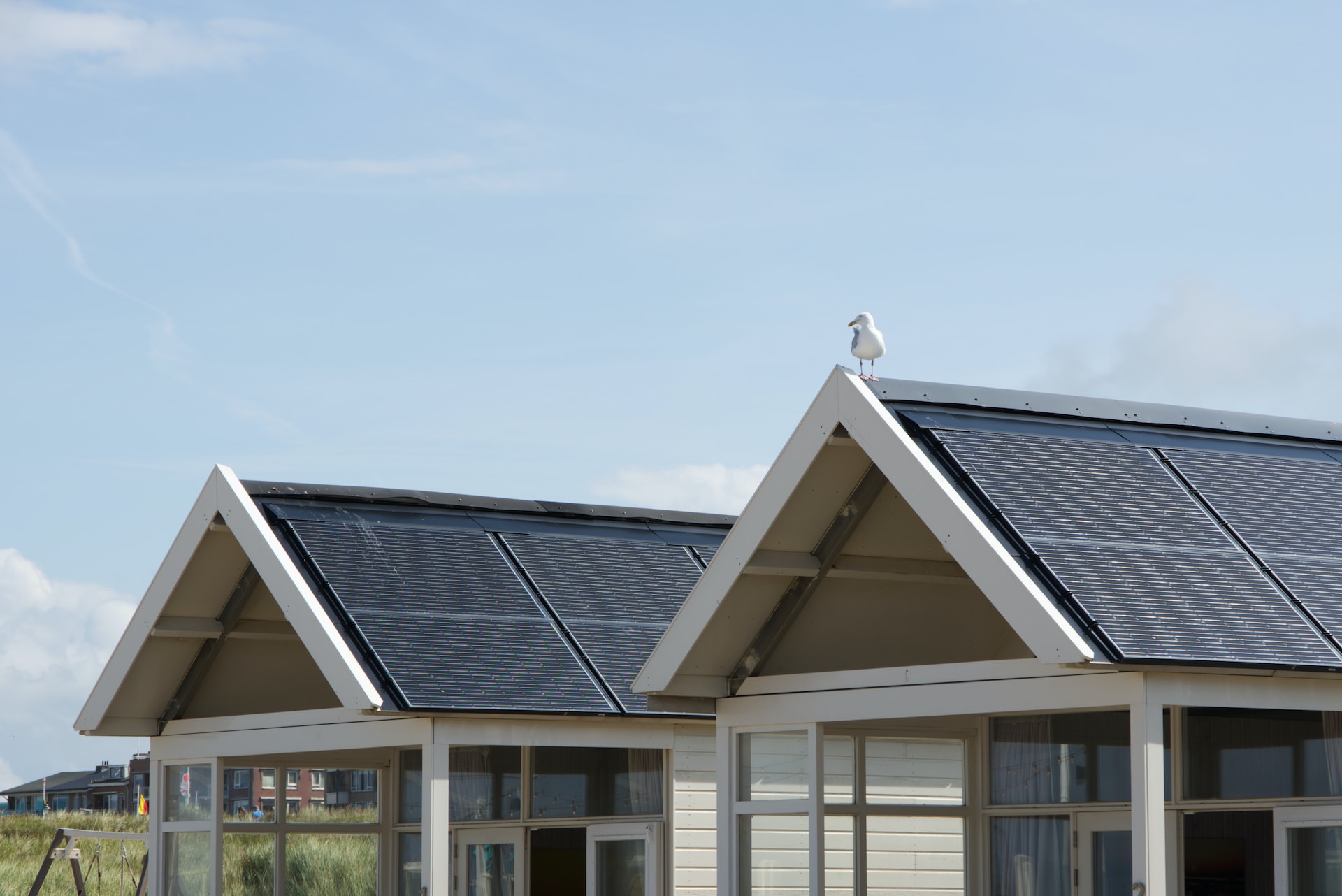
Roof-Mounted System
The typical residential solar system has roof-mounted solar panels. This is possible due to the large amount of roof space of a normal-size house. With a tiny house comes a tiny roof that usually won't be able to fit enough panels to power a home.
Not only that, but the weight of the solar array may pose an issue for the integrity of the roof. Each 400W residential panel weighs around 50 lbs. If you are mounting seventeen or more of these panels, there could be a combined weight of 850 lbs or more. Combined with the added weight of snow or other roof fixtures, an array of this size may be too heavy for a tiny home. Be sure to check that your roof has enough area and a high enough weight limit to accommodate a roof-mounted solar system.
Unless the energy usage can be kept to that of an RV solar system, tiny home owners are better off with a ground-mounted system.
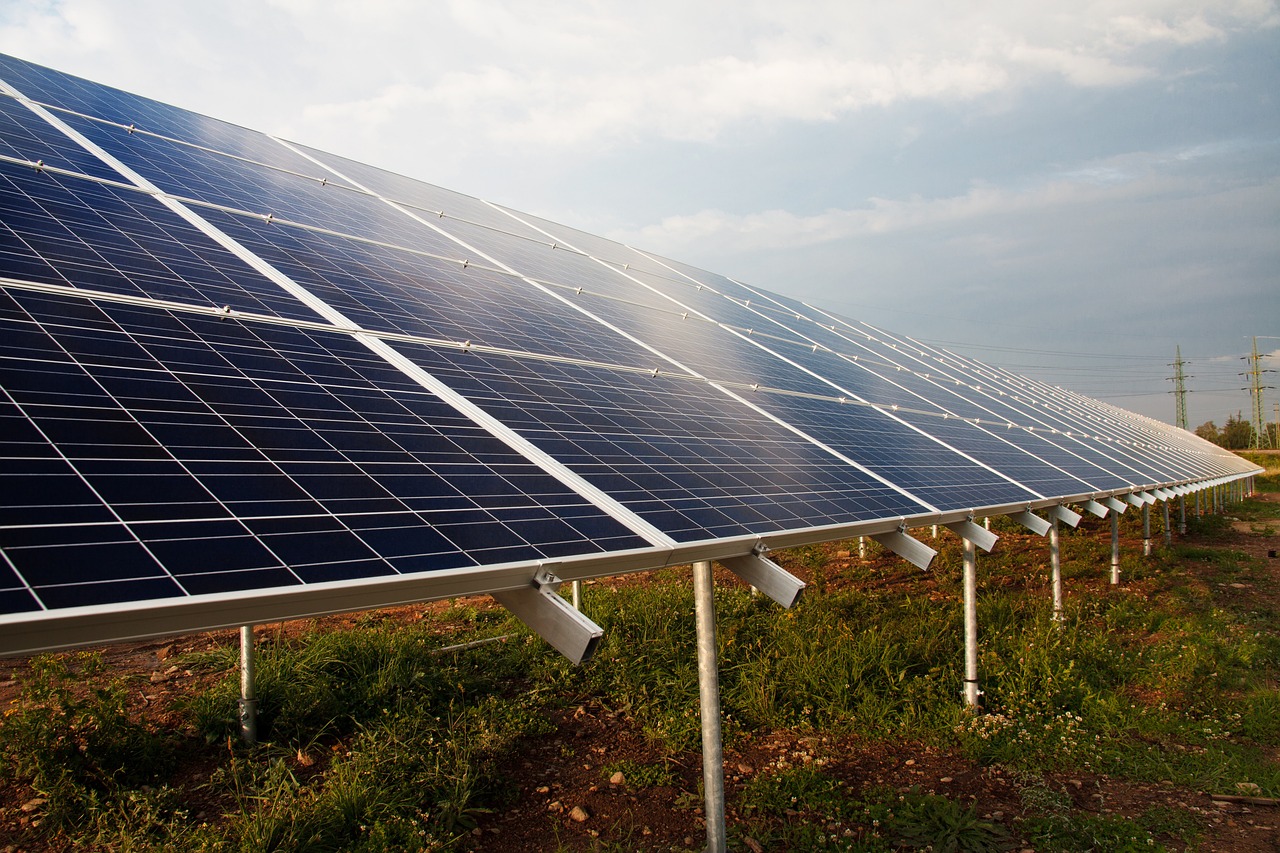
Ground-Mounted System
Ground mounting is the preferred installation method for most tiny home solar panels.
Ground-mounted systems are much more accessible for homeowners. Maintenance and cleaning can be performed quickly and with added safety, as there is no need to climb onto a roof.
Plus, the angle and orientation of your panels can be perfected as the seasons change and the sun's trajectory changes. In the summer, the sun travels further overhead. During the winter, the sun is lower across the southern sky. Changing the angle of your panels according to these patterns can increase the efficiency of your panels.
You can even make daily adjustments with ease to eek out every last drop of energy during the low sun hours of winter months. This can make the difference between being fully self-sufficient and having to draw power from the grid. Or, it can allow you to go off-the-grid with a smaller array.
Conclusion
A tiny home can be energy independent with a moderately-sized solar power system. This allows you to set up your tiny house in remote, peaceful locations.
Optivolt is a leader in solar panel research and manufacturing. They produce innovative energy solutions with the hopes of providing sustainable energy for all.
Related Questions
What Are the Best Solar Panels For a Tiny House?
Monocrystalline solar panels are widely-used for tiny homes and provide a good cost-benefit ratio. They are more efficient than polycrystalline panels, but they also cost more money upfront. Shade-tolerant solar panels improve upon both technologies and provide added efficiency in partially-shaded conditions.
